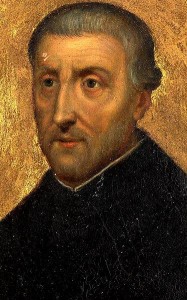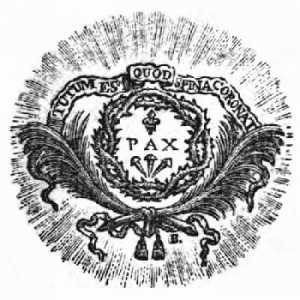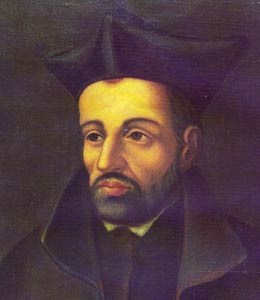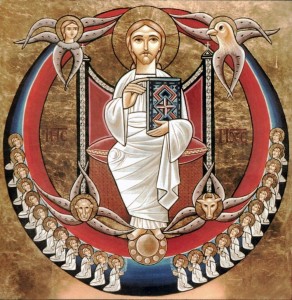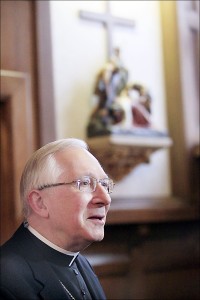The Jesuit saint Peter Canisius is hard not to like and follow. He was certainly on fire for the love of Christ and desired to be an apostle. With the Church we pray:
O God, who for the defense of the Catholic faith made the Priest Saint Peter Canisius strong in virtue and in learning, grant, through his intercession, that those who seek the truth may joyfully find you, their God, and that your faithful people may persevere in confessing you.
From the writings of Saint Peter Canisius – A spiritual experience:
Before he set out for Germany—he is rightly called the second apostle of that country—Saint Peter Canisius received the apostolic blessing, and underwent a profound spiritual experience. He describes it in these words.
Eternal High Priest, you allowed me in your boundless goodness to commend the fruit and confirmation of that blessing to your apostles, to whom men go on pilgrimage to the Vatican and who there work wonders under your guidance. It was there that I experienced great consolation and the presence of your grace, offered to me through these great intercessors. They too gave their blessings, and confirmed the mission to Germany; they seemed to promise their good will to me as an apostle of that country. You know, Lord, how strongly and how often you committed Germany to my care on that very day: I was to continue to be solicitous for it thereafter, I was to desire to live and die for it.
At length, it was as if you opened to me the heart in your most sacred body: I seemed to see it directly before my eyes. You told me to drink from this fountain, inviting me, that is, to draw the waters of my salvation from your wellsprings, my Savior. I was most eager that streams of faith, hope and love should flow into me from that source. I was thirsting for poverty, chastity, obedience. I asked to be made wholly clean by you, to be clothed by you, to be made resplendent by you.
So, after daring to approach your most loving heart and to plunge my thirst in it, I received a promise from you of a garment made of three parts: these were to cover my soul in its nakedness, and to belong especially to my religious profession. They were peace, love and perseverance. Protected by this garment of salvation, I was confident that I would lack nothing but all would succeed and give you glory.
